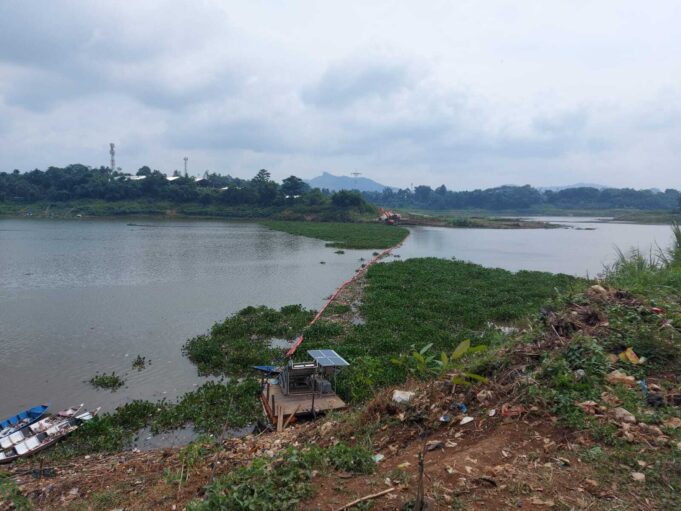
In December 2021, we started our river waste collecting operation in the Citarum as a part of the Clean Currents Coalition. The Citarum is the longest river in West Java, Indonesia, stretching 297 kilometers before reaching the Java Sea. Initially, our operation was limited only to the application of a semi-automatic mechanical waste capture system consisting of a pontoon mounted waste collector, a trash boom set, and a waste transporting system from pontoon to sorting house.
As our operation began to run smoothly, a few questions arose: what if the volume of waste flowing through our site was either higher or lower than our device design capacity? How will the operation continue beyond the initial start-up funding? To answer the latter question, RiverRecycle explored the possibility of developing a plastic credit model to fund our operations long term.
After a trial period from October 2022 to May 2023, it was determined that the plastic credit program could fully fund our Citarum operation. Not only that, but the availability of plastic credits also enabled us to partly answer the questions around our volume of waste collection. Thus far, our waste collection rates had been substantially lower than anticipated due to the chronic and overwhelming presence of water hyacinths, but the plastic credit program allowed us to expand into what we call our “River Scavengers Engagement Program” and our “Community Engagement Program.”
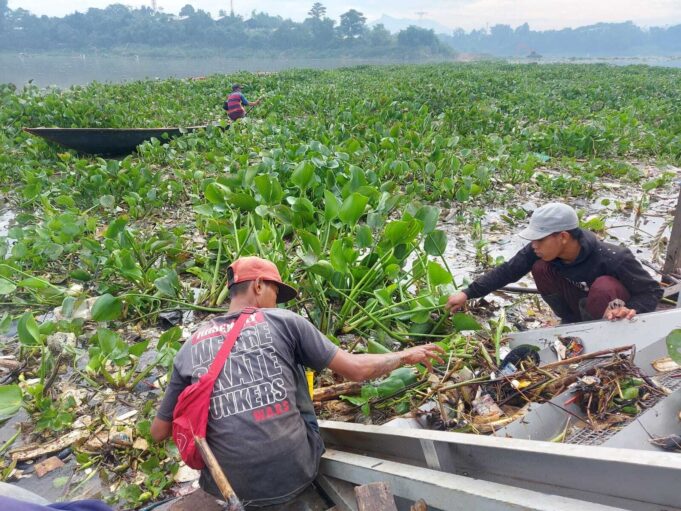
River Scavengers Engagement Program
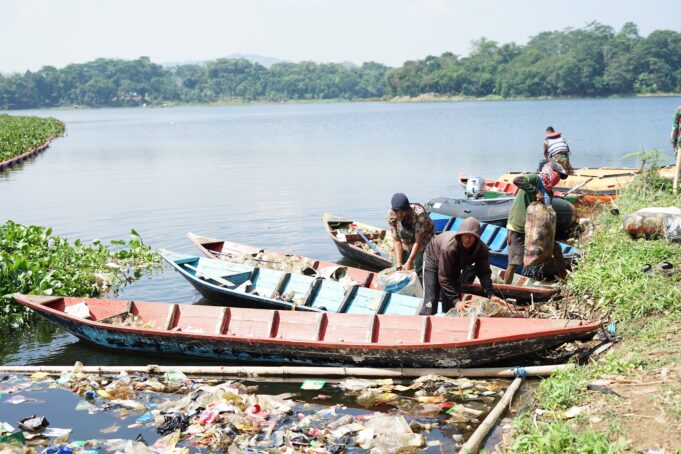
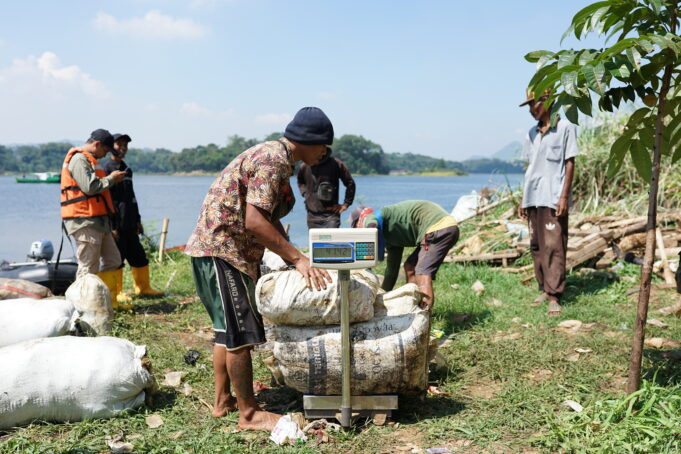
In the Cihampelas Village where we operate, and also in the nearby Citapen Village, we found that there are a number of households whose main livelihood depends upon scavenging plastic waste in the Citarum River. Up until now, they only collected high-value plastic waste such as PET bottles and PP cups, leaving the low-value (and most abundant) plastic waste in the river.
Recognizing this opportunity to increase our total plastic collection, we began collaborating with these river scavengers to:
- Increase their income;
- Increase the total volume of river plastic we capture (and “monetize” into plastic credits);
- Provide additional feedstock for our plastic board and pellet production (another one of our solutions for sustained funding and waste management).
The collaboration with the scavengers works like this: each participating scavenger agrees to collect a certain quota of low-value plastic from the river. We then purchase the low-value plastic collected by the scavengers at an agreed-upon price and use it as feedstock in our plastic board and pellet production. The scavengers also collect and weigh high-value plastics, which they are free to sell to the existing supply chain for their own benefit.
Since the inception of the River Scavengers Engagement Program in May 2023 through November 2023, 24,235 kg of high-value plastic and 251,812 kg of low-value plastic have been collected from the Citarum with the collaboration of around 15 scavenger households.
Community Engagement Program

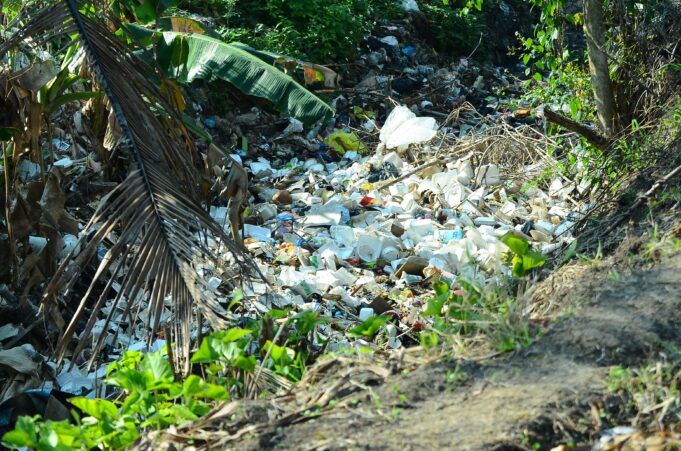

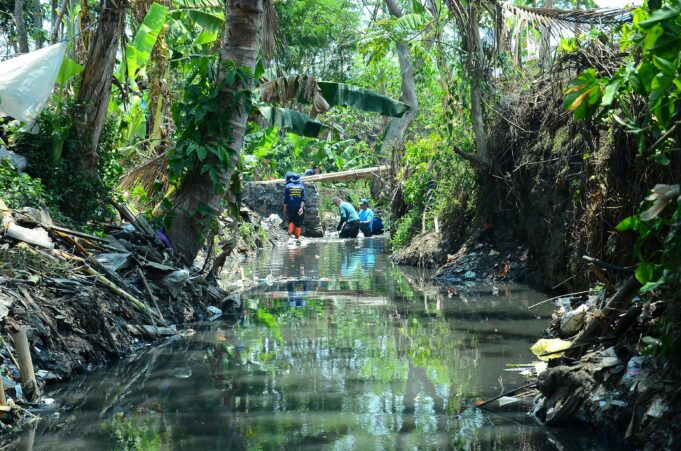
Looking closely at our data, we realized a significant proportion of our collected waste is household or domestic waste, originating mostly from the Citarum’s tributaries. These tributaries are in densely urban and semi-urban settlements where many residents maintain the habit of dumping their waste into the river, gutters, and drainage canals due to the non-existence of proper waste management systems.
This situation has revealed some of the main issues of the Citarum Basin, namely:
- The low awareness of residents in maintaining and protecting river ecosystems;
- The limited capacity of existing waste management in some areas;
- The chronic accumulation of dumped waste in many of the Citarum’s tributaries.
Reflecting on these issues, we came up with the Community Engagement Program. This program is intended to:
- Mitigate the accumulation of waste in polluted water bodies;
- Increase awareness to preserve rivers;
- Introduce waste sorting practices to communities.
For now, the Community Engagement Program consists of river clean-up events. We invite people from the surrounding areas to join in our river clean-up efforts and learn about waste sorting practices. So far, we have successfully conducted two river clean-up events. The response from the communities has been quite positive with a desire to continue this program at other locations. During both events, we were joined by over 130 participants and collected about 4 tons of plastic waste and 8 tons of total waste.


Low-Value Plastic Recycling Program
By successfully increasing river plastic waste collection, we have already surpassed the feedstock volume required for our plastic board production plant. This has opened up another possibility for revenue generation, which is the recycling of our extra low-value plastic into pellets using the idle capacity of existing local recycling plants under a manufacturing service agreement.
The goals of the low-value plastic recycling program are to:
- Make recycled products out of plastic waste collected from the Citarum in a relatively short time with low capital input;
- Drastically reduce the need for storage area by turning plastic waste into more compact pellets;
- Provide flexibility for maximizing revenue potential in anticipation of plastic market price fluctuations.
We began our first trial in mid-December 2023, recycling 5.1 tons of single-use plastic bags (locally known as ‘asoy’) into plastic pellets. The next step will be to utilize different types of plastic waste in the recycling process.

RiverRecycle’s operation in the Citarum River has taken a distinctive approach designed and developed specifically for our location by adjusting to the existing site conditions. Over 5 million people live in the Citarum River basin, and these stakeholders continue to face challenges in terms of conflicting interests in river management, limited waste management service capacity, and low environmental awareness around river ecosystem conservation and waste handling.
We see these challenges as opportunities for developing new solutions towards achieving the Clean Currents Coalition goal of eliminating the flow of plastic waste into rivers and eventually into the ocean. At RiverRecycle, we are growing more confident that through innovation, focused persistence, and collaboration, we will be able to find answers to the challenges of cleaning rivers all over the world.
Learn more about RiverRecycle and their work:





